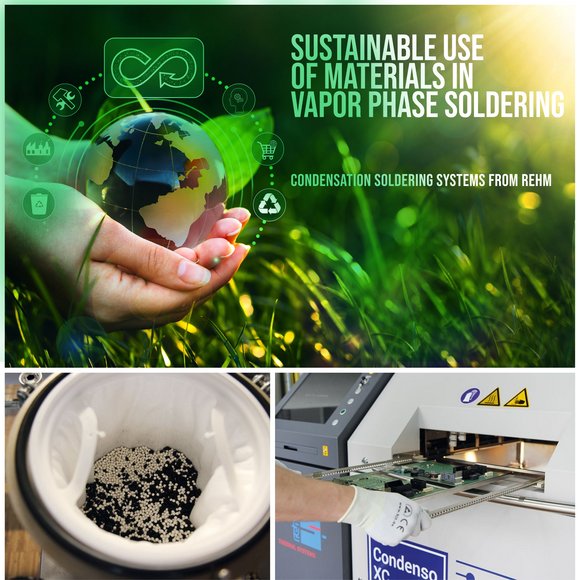In the social and political debate of recent years, the question of how to reduce the consumption of resources and how to recycle waste more sensibly has become much more relevant. One solution that has emerged from this is the concept of the circular economy, which can now be found in numerous national, regional and international strategies. The aim of the circular economy is to transform the previous linear economic system – which functions according to the take-make-waste flow principle – into a system focused on resource conservation, recycling and waste prevention.
With the closed-loop system for the injected medium Galden® integrated in the vapour phase soldering systems of the Condenso series, Rehm has utilised a future-proof, sustainable solution right from the start.
The principle is equally efficient and resource-saving. After soldering, the vacuum and / or cooling process starts. At the same time, the process gas is extracted and purified. A vacuum is created during extraction – this guaranteeing rapid drying of the solder and process chamber and hence also minimising losses when the products are discharged.
The extracted Galden® is filtered and cleared of impurities using granules. Thus, about 99.9% of the medium can be recovered. The purified liquid is stored in a container at room temperature and made available for further processes. That means there are no evaporation losses and no energy losses. Due to the hermetic sealing of the process chamber (at the same time vacuum chamber), “evaporation loss” during soldering is also prevented. In addition to the minimum maintenance effort, the operating costs are also reduced by the lower medium consumption.
Greater reliability in the solder joint for durable products
The systems of the Condenso series can also be equipped with a vacuum process. This vacuum technology is used in a wide variety of processes. Oxidation is reduced in drying and bonding processes and the reliability of solder joints is increased in reflow soldering by reducing voids. Rejects are reduced, the life cycle of the end products is extended and ultimately a further contribution is made to the implementation of a sustainable circular economy in electronics manufacturing.
